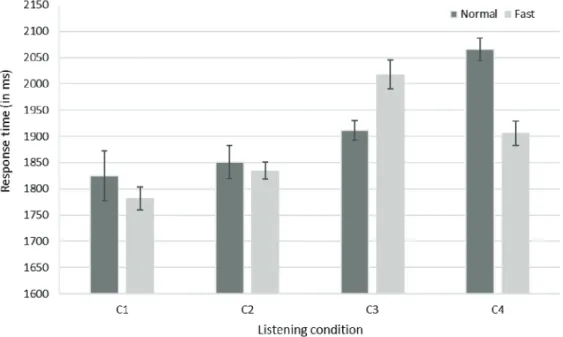Children’s perception of degraded speech at normal vs. fast speech rate
Texte intégral
Figure



Documents relatifs
Such findings would help verify if lack of visual clues (if it is at all the reason for differences between blind and sighted people) has consequences on the temporal
Initial results from an experiment with French listeners rating speech rates in French, German, and English show that, despite varying objective speech rates, listeners are well
Analysis of response times broken down into miniblocks of 5 sentences of the same rate reveals that whereas performance for normal sentences remains stable over time, response
• It is noteworthy that dyslexic adults present significant auditory non- words identification deficit in the control condition in which the speech signal is
None phonological codes are needed to the dyslexic group to accurately identify non-words so we hypothesis that dyslexics probably show an auditory deficit in
Table 3: Regressions of human responses against native (French-DP for French listeners, English-DP for English lis- teners) versus non-native (switched) trained DPGMM
Experiment 1 revealed that infants exposed to AD speech did not show any sensitivity to either German or French visual stimuli in response to the auditory
Table 3 Shows the correlation results observed between the priming effect (according to attention: priming effect observed in the attended condition and the priming effect observed